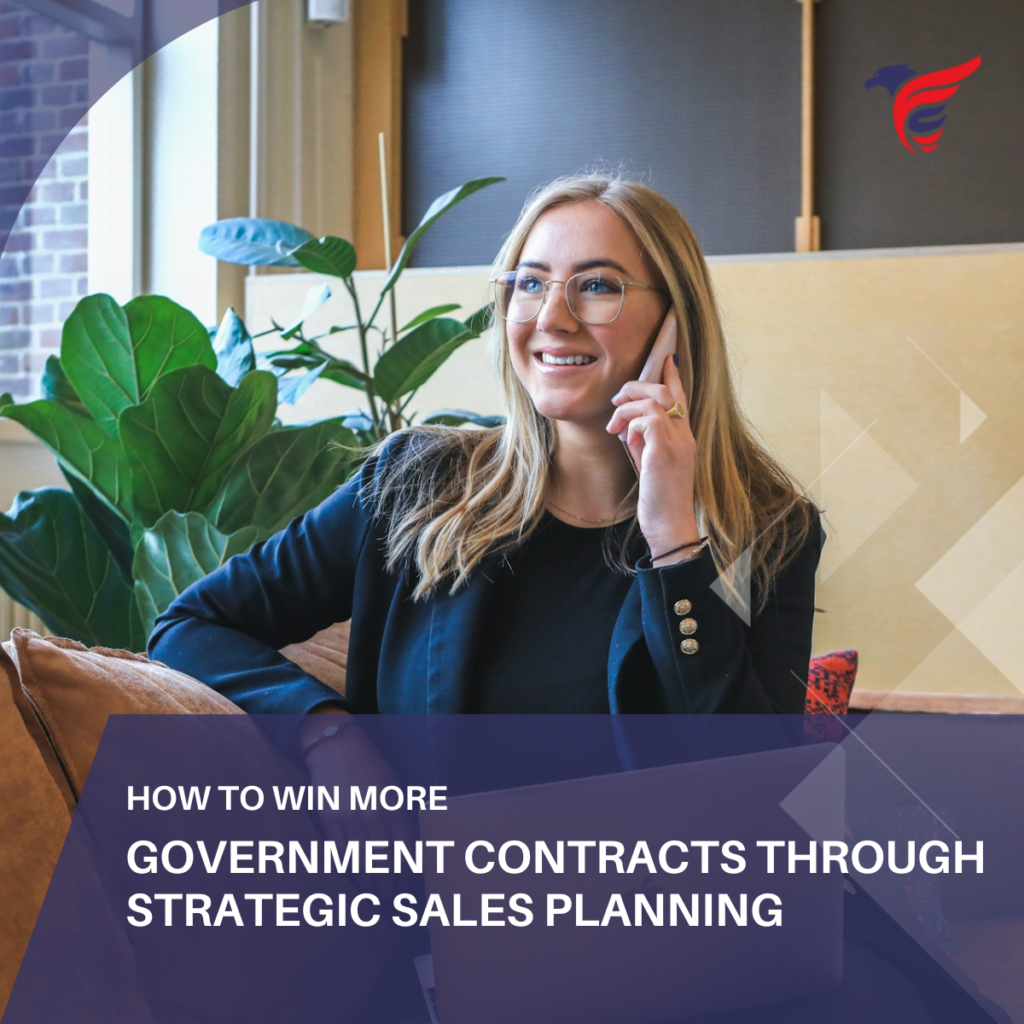For small businesses entering or expanding within the government contracting space, understanding and executing a strategic sales planning process is crucial to long-term success. This process, part of the broader government contracting lifecycle, allows businesses to position themselves early in the procurement process—well before a Request for Proposal (RFP) is even issued.
Many small businesses feel overwhelmed by the pre-RFP stage. This is understandable, as it involves extensive research, uncertainty, and long lead times. However, this stage offers the highest potential for shaping requirements, influencing opportunities, and positioning your business to win by building relationships.
Let’s break down how you can optimize your strategic sales planning efforts to win more government contracts.
- Understand the Government Contracting Lifecycle
Government procurement follows a lifecycle: identification of need, planning, solicitation, evaluation, award, and post-award performance. Strategic sales planning sits at the earliest stage—before the government even issues an RFP. This is when agencies begin to plan budgets and define their needs, and it’s your opportunity to get involved, influence requirements, and lay the groundwork for a future bid.
- Track Spending Forecasts and Pre-RFP Opportunities Early
To succeed in this phase, you must proactively monitor spending forecasts, agency budgets, and upcoming procurement plans. Tools like SAM.gov, USAspending.gov, and agency-specific procurement forecasts, as well as third-party tools that aggregate contracting data like HigherGov, can help identify which agencies are planning projects that align with your capabilities.
Use this data to evaluate trends, understand the timing of key solicitations, and identify where your offerings fit into the government’s future needs. Building a tracking system to log and prioritize potential opportunities is essential for maintaining pipeline visibility and focus.
- Make Strategic Go/No-Go Decisions
Not every opportunity is a good fit. Strategic planning helps you make informed go/no-go decisions based on scope, competition, past procurement history, and your internal capabilities. By evaluating opportunities early, you conserve resources and pursue contracts where your business is most competitive.
Ask:
- Do our capabilities match the need and projected scope of work?
- Do we have past performance that aligns with this opportunity?
- Do we understand the agency’s mission and priorities?
- Can we influence the opportunity before it’s publicly released?
- Shape Bids and RFPs Before They’re Released
Influence is strongest in the pre-RFP stage. Engage with program managers, contracting officers, and stakeholders to understand their needs and position your company as a trusted advisor. This is also the time to offer white papers, capability briefings, or presentations that align your services with their mission.
This preemptive outreach can help shape the final RFP to include requirements that play to your strengths—giving you a competitive edge.
- Build Relationships with Key Decision-Makers
Relationships are everything in government contracting. Take time to network at industry days, small business outreach events, and conferences. Leverage your SBA certifications (if applicable) to access agency small business liaisons. Consistent, value-based engagement with decision-makers builds trust and helps ensure your name is in the room long before a bid hits the street.
Conclusion
Winning government contracts isn’t just about responding to RFPs—it’s about being strategic well before they appear. By tracking early opportunities, shaping requirements, and building meaningful relationships, small businesses can shift from reactive bidding to proactive positioning. With the right sales planning approach, your company can become a consistent and competitive force in the government marketplace.




